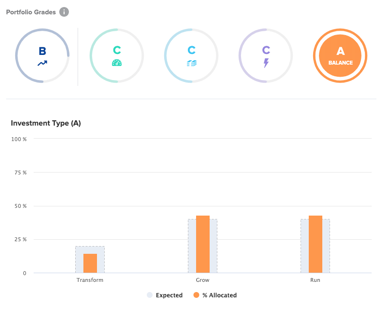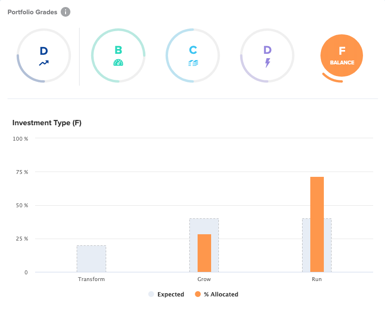For all Balance fields, the grades assess the degree to which the composition of allocated projects matches the an expected desired blend of Projects based on . Balance grading can be used to determine if the mix of projects for a given plan matches with expectations where high graded plans (A grades) are plans that closely match desired/expected mix and poorly graded plans (F grades) are plans that significantly deviate from expectations.
The expected mix of allocations across Balance fields is automatically generated by looking at that mix of possible options and the associated Request amounts of those projects for the specific options within that category. For example, if a Portfolio had a Balance field called Investment Type a company would want to fund across Run, Grow, and Transform. The expected mix would be calculated at the totality of the possible projects split out by Run, Grow, and Transform and those associated requests. Based on the mix of available projects, we'd expect a higher expected percentage of requests in the Run and Grow and lower amount of Transform. The "Actual" looks at the projects in a specific Plan that are in an allocated status (In-Progress, Scheduled, Completed) and looks at the spread of those allocations across the Investment Types. To get a good Balance grade, the mix of allocated Types would closely match our calculated expected mix based on the requests.
The associated Balance graphs provide a visual representation of the Grading of a given plan. The dotted lines represent the expected target mix and the orange bars represent the actual allocation. For a
The example on the left represents a plan that closely matches desired expectations (A Balance grade) and the example on the right below represents a Plan that deviates from desired results thus getting an F Balance Grade.

